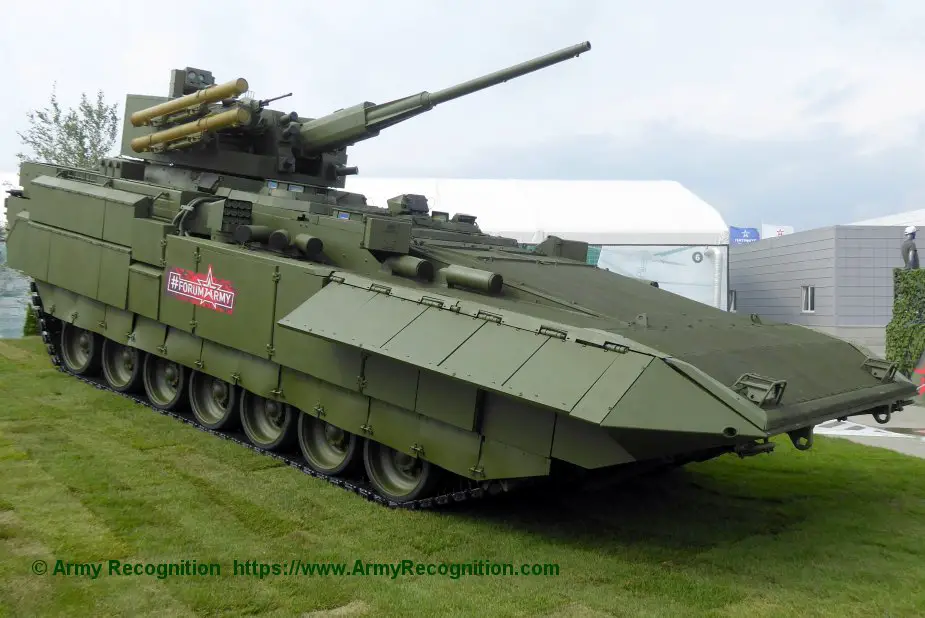Breaking news
Russia discusses tactical module creation and engagement concept.
The Defense Ministry and Uralvagonzavod Corporation (UVZ) signed a contract for the delivery of the first batch of T-14 tanks on Armata platform and the first vehicles have to be supplied by the end of 2018. New modular units will fight instead of usual tank and motorized infantry platoons, companies and battalions. The Russian Defense Ministry is actively discussing the concept of their creation and engagement. UVZ Deputy CEO Vyacheslav Khalitov told the Izvestia daily about the modular companies and platoons and their armaments.

T-15 Armata ICV, or fire support vehicle, displayed at Army-2018 near Kubinka, 21-25 August 2018 (Picture source: Army Recognition)
A minimal module must have one-two battle tanks, two-three fire support vehicles, several infantry fighting vehicles (BMP) and combat control and support vehicles. The heavy BMP T-15 on Armata platform is a prototype of the fire support vehicle. It has a controllable combat module and high-speed 57mm gun. It is not a classical infantry fighting vehicle as it has no motorized rifles onboard. The free space is used to increase the ammunition load to the maximum. The fire support vehicle has to have the necessary number of armor-piercing, high-explosive, incendiary and other shells, i.e. the weapons to destroy most complicated targets in any developments. The combat module is equal to an infantry platoon reinforced by tanks. As it is impossible to fight without infantry, the combat module has to include several APC with a squad of motorized rifles. The vehicles can be armed with 30mm guns although a 57mm combat module is more efficient.
The commander stays in the combat control vehicle and manages the whole combat module. The role of the support vehicle is important. It has to deliver munitions, provide medical and technical aid. The concept of the vehicle is yet to be designed. But it is clear that all the hardware of the module has to be based on a single platform with the same protection and mobility. It also simplifies maintenance in field conditions.
A platoon combat module equals a motorized infantry company but exceeds it in firepower several fold. It is a major advantage in modern combat. Other parameters, such as protection, cross-country capacity, and mobility are also several times better. Let’s consider combat engagement of a motorized infantry company reinforced with tanks. Infantry fighting vehicles BMP-1, BMP-2 and even BMP-3 have less armored protection than tanks. They are destroyed first in combat. Only tanks can thus break through to the second adversary line of defense. Soldiers will be killed. The new hardware helps deal with the problem.
The heavy BMP on Armata platform has better armor than a tank by some parameters. It helps motorized rifles keep the pace, fight for a long time and preserve strength for a decisive advance. The module will suffer less losses than a motorized infantry company reinforced with tanks.
The modules will change the general combat. They will be united into tactical groups or companies of three modules. The group will be controlled by a separate command vehicle and will thus have a strong and single control. Several collective protection vehicles on Armata platform have to be included into the group. Firstly, it is an air defense complex. Secondly, a vehicle with guided missiles can render support by pinpoint fire from the second line at important ground targets. Thirdly, there should be a reconnaissance vehicle and possibly an NCB protection vehicle. Several units have to make up a combat tactical group.
The cohesion should be trained in peacetime which means the groups have to be formed on a permanent basis in various formations, UVZ Deputy CEO Vyacheslav Khalitov told the Izvestia.


























